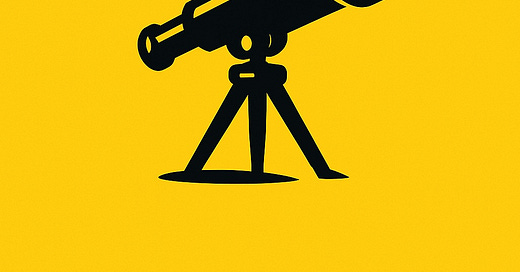Yogi Berra supposedly said,
„It's hard to make predictions, especially about the future.”
Nothing could be truer about AI therapy. Harvard Business Review reports that “therapy/companionship” is the top use case for generative AI. There is a first randomized controlled trial by Dartmouth College on therapy chatbots. AI based writing seems comparable to therapist responses. But what we see here is just the start. Nobody knows what AI therapy will look like.
Still, we might find hints on what the future could look like and to help you with that I highly recommend Rita McGraths book “Seeing Around Corners”. In it, she explains how, in certain areas, we can learn from the past about the future. One of the most fascinating historical facts in the book was that when moviemaking began, nobody knew what a movie was.
The concept of a movie was so new and radical that nobody had any idea what it could look like. So people started with what they knew—filming short, staged comedy scenes or simply recording a stage play. Even the idea of making a cut and assembling scenes from different locations in one movie was radical because it was not possible using any means before. These first moviemaking steps are understandable because film had an obvious connection to the theater. It was only over time that movies evolved into their own medium. So, when innovation occurs, people in the early stages tend to transfer old schemas onto the new concept, such as making a movie by recording a stage play on film.
The Parallels of Early Movie Making and Digital Higher Education
A similar thing happened when higher education transitioned online. Once again, nobody knew what it would look like. Surprisingly similar to the history of moviemaking, digital higher education began by filming entire lectures lasting 90 minutes, which were then uploaded online. Educators believed this would define online education. We then moved from massive open online courses (MOOCs) to various forms of higher education, now including highly interactive platforms that combine elements such as text, audio, visuals, quizzes, and gamification features. These digital formats of higher education are vastly different from the traditional 90-minute lecture conducted in a classroom and remain somewhat removed from a 90-minute lecture recording, which you can still find online on YouTube as a relic of the early stages of online higher education.
Therapy is a comparable concept that has many variations. Most people think of therapy as occurring in face-to-face sessions between a therapist and a client. However, there are also related concepts such as psychosocial counseling, hotlines where people discuss their well-being or mental health over the phone without seeing each other, and video conferencing systems that allow therapy to be conducted remotely on a screen while participants see each other.
If you think about video therapy, it is interesting that it mostly clings to face-to-face therapy in many ways. It may be for organizational or billing reasons, but why should video therapy be similar to face-to-face therapy? Why does it last 50 to 60 minutes? Why does it not offer different features compared to face-to-face therapy?
Observe The Edges and Fringes
Is this like a staged theater play recorded in the early days of movie-making? Where do we go from here? What could be the next steps for video therapy, and what other tools or concepts could benefit this interaction?
When we think about AI therapy, this question becomes even more pressing: we currently see the early stages of AI developments in mental health. Many of these cling to old concepts, which is likely the easiest way to begin. However, it may not represent the best or most effective therapy that could be achieved in this new medium and with these new tools.
I have no idea what AI therapy will look like, but I want to open the discussion. Returning to Rita McGrath, one observation has stayed in my mind since I first read it: "Snow melts from the edges."
We should observe the fringes and edges of psychotherapy and AI to envision what the future looks like.
These are my thoughts but I am eager to hear yours in the comment!




A couple of professors in my clinical psych program were studying the "active ingredients" in psychotherapy (example: generation of HOPE!). The 50 minute office session is just a "package" for delivering those active ingredients. Innovation is about finding better, faster and less expensive ways of delivering therapeutics to the human population. Onward!